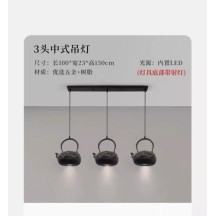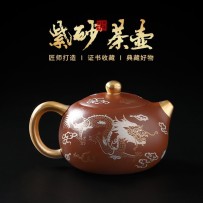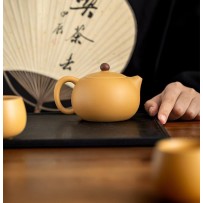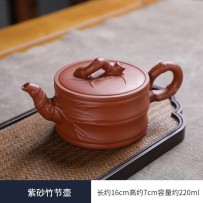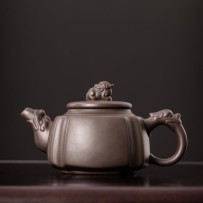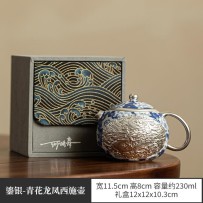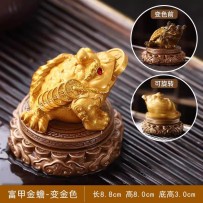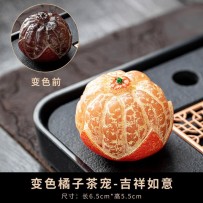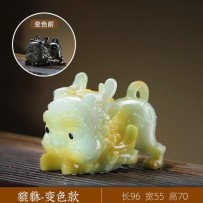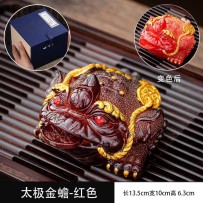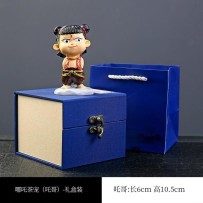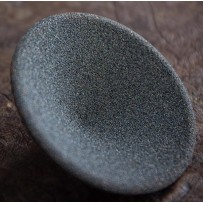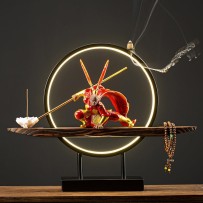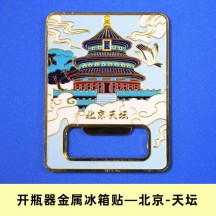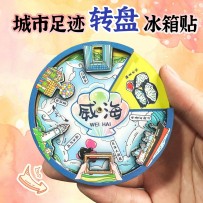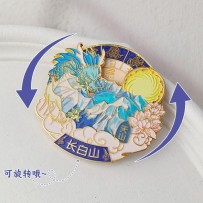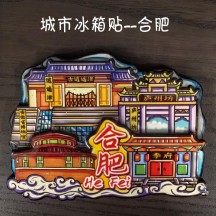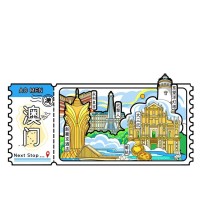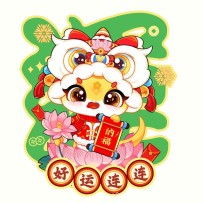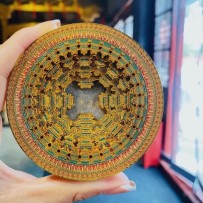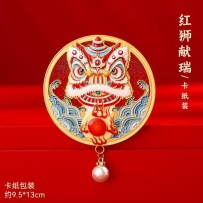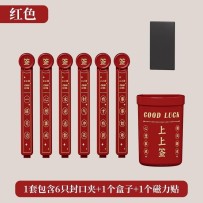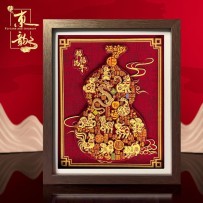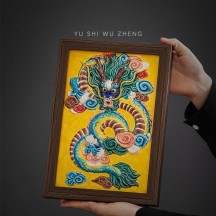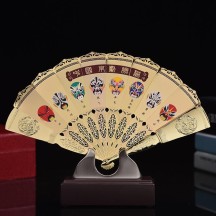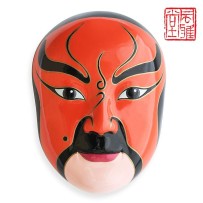The tea utensil holder, made from hickory and walnut wood, features a unique design. Carefully crafted from selected wild hickory, it undergoes over a dozen processes including selection, cutting, polishing, and bonding. Hickory is known for its beautiful grain, varied shapes, and naturally rustic appearance. Paired with walnut wood, the tea holder exudes a sense of antique charm and refined elegance.
Living Aesthetics
Subcategories
China is the birthplace of tea. Beyond being an essential daily beverage, tea has also been integrated with the philosophies of Confucianism, Taoism, and Buddhism, making it a vital part of traditional Chinese culture and imbuing it with deep spiritual meaning. As the vessels for tea and water, teaware plays a significant role in the practice of the tea ceremony.
This is a deep-toned tea table ambience lamp, featuring a tin base combined with leaf-textured rock inlays, all sealed with traditional lacquer. Its design is both rustic and elegant, blending ancient charm with modern aesthetics. Versatile and timeless, it complements a wide variety of tea table settings.
Design Concept: A graceful fusion of New Chinese style and classical elegance, intertwined with the fashion of modernism — creating a beautiful encounter in the midst of a bustling modern city. While embracing the fast pace of life, it also offers a moment of elegance and a taste of refined charm.
Zisha clay, or purple clay, is a type of ceramic that lies between pottery and porcelain. It is characterized by its dense structure, near-porcelain vitrification, high strength, and fine particles. While the surface of the vessel appears smooth and well-formed, it contains subtle granular variations that create a distinctive sandy texture.
Design Concept: Rooted in contemporary lifestyle aesthetics, this design integrates ethnic elements and collaborates with skilled artisans to create pieces that bring new life to the fading brilliance of traditional Chinese craftsmanship, opening up endless possibilities for its integration into everyday life.
Teapots, teacups, and other vessels are the soul of tea brewing. The teapot, as the centerpiece of the tea set, holds both tea leaves and water to steep the tea. Teapots come in a wide variety of shapes and designs, offering both practical functionality and artistic value, enhancing the overall atmosphere and enjoyment of tea appreciation. A good teapot is heat-resistant and retains warmth, allowing the essence of the tea to infuse quickly into the water, releasing its full aroma and showcasing the charm of fine tea to the fullest.
One of the prized clay materials used in Zisha teapots has a jade-green hue, excellent breathability, and a delicate texture that feels as smooth as a baby's skin. After regular use and proper seasoning, it develops a rich patina. It is renowned for its qualities, described as “as hard as iron, as fluid as water, as smooth as jade, and as resonant as a bell.”
A teapot is the perfect companion for brewing tea—serving one tea with one pot symbolizes loyalty, devotion, and family harmony in traditional culture. Therefore, gifting tea and a teapot during festive occasions is more than just a gesture; it conveys cultural heritage and refined taste. Giving teaware is a sign of respect, making it an ideal gift for leaders, elders, or clients.
Porcelain body with silver gilding — the fusion of ceramic and silver creates a unique tea vessel, weaving together the wisdom of artisans passed down through millennia. Elegant yet practical, it feels like a serendipitous encounter. Crafted from clay and silver, it embodies both tradition and innovation.
Tea pets, also known as tea toys, are playful ornaments in Chinese tea culture designed to enhance the enjoyment of tea drinking.
Tea pets, also known as tea toys, are playful ornaments in Chinese tea culture designed to enhance the enjoyment of tea drinking
Tea pets, also known as tea toys, are playful ornaments in Chinese tea culture designed to enhance the enjoyment of tea drinking.
Tea pets, also known as tea toys, are playful ornaments in Chinese tea culture designed to enhance the enjoyment of tea drinking
Tea Strainer: As the name suggests, a tea strainer serves the purpose of filtration. Though often overlooked, it plays a crucial role in the tea set. Its main function is to filter out tea leaves and fine particles from the tea liquor, ensuring a clear and bright brew. This not only enhances the visual appeal of the tea but also improves its taste.
Tea pets, also known as tea toys, are playful ornaments in Chinese tea culture designed to enhance the enjoyment of tea drinking.
Travel fridge magnets carry a wide range of meanings. They are not only souvenirs from a journey but also vessels of memories and emotions tied to travel, as well as symbols of one’s longing for different cultures and places.
Travel fridge magnets carry a wide range of meanings. They are not only souvenirs from a journey but also vessels of memories and emotions tied to travel, as well as symbols of one’s longing for different cultures and places.
Fridge magnets are small yet delightful cultural and creative products. They serve not only as decorative items but also as carriers of travel memories, expressions of emotion, and even conveyors of cultural messages.
Fridge magnets are small yet delightful cultural and creative products. They serve not only as decorative items but also as carriers of travel memories, expressions of emotion, and even conveyors of cultural messages.
Fridge magnets are small yet delightful cultural and creative products. They serve not only as decorative items but also as carriers of travel memories, expressions of emotion, and even conveyors of cultural messages.
Fridge magnets are small yet delightful cultural and creative products. They serve not only as decorative items but also as carriers of travel memories, expressions of emotion, and even conveyors of cultural messages.
Fridge magnets are small yet delightful cultural and creative products. They serve not only as decorative items but also as carriers of travel memories, expressions of emotion, and even conveyors of cultural messages.
Fridge magnets are small yet delightful cultural and creative products. They serve not only as decorative items but also as carriers of travel memories, expressions of emotion, and even conveyors of cultural messages.
The meaning of a "fortune slip" refers to the act of drawing a message to predict the future or seek insight into good or bad fortune—essentially a form of divination. It is often seen as a symbol of hope, offering spiritual comfort in times of difficulty, and can also serve as a way to relax and lighten one’s mood.
This product is inspired by the "gourd," which serves as the central design element. Combined with meaningful text, it incorporates characteristics and customs of traditional Chinese festivals to create a joyful and harmonious festive atmosphere. The overall design features a golden color scheme, symbolizing prosperity and good fortune. It creatively integrates hollowed three-dimensional imagery with traditional paper-cutting, a form of intangible cultural heritage, resulting in a unique and artistic decorative piece.
Among the Four Divine Beasts, the Azure Dragon holds significant symbolic meaning and cultural value. It represents power and authority, protection and blessings, morality and wisdom, as well as cultural heritage and a sense of national pride.
Chinese fan culture carries a profound cultural heritage and is an integral part of the nation's traditions. Beyond being used for cooling, fans also serve as props in dance and stage performances, symbolizing friendship and connection. They make thoughtful gifts for friends, family, and international guests. Today, fan decorations are increasingly found in homes and have gradually evolved into objects of artistic appreciation, greatly enhancing their cultural and aesthetic value.
Facial makeup in Peking Opera is a decorative art form that combines dots, lines, shapes, and colors in an organic way. With vibrant hues, elegant designs, and exaggerated stylization, it vividly and expressively portrays the appearance and personality traits of theatrical characters. This art form reflects the aesthetic creativity and cultural spirit of the Chinese people.







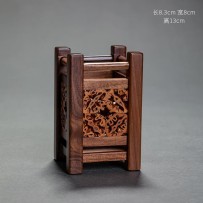

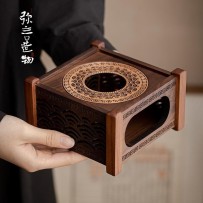

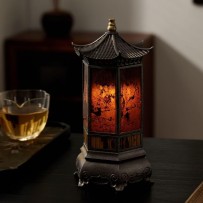

![[Teapot Pendant Light] – Single Hanging Light with Spotlight, Tea Aesthetic Pendant Lamp in Traditional Style](https://chinachic.shop/2665-inner_default/-teapot-pendant-light-single-hanging-light-with-spotlight-tea-aesthetic-pendant-lamp-in-traditional-style.jpg)
